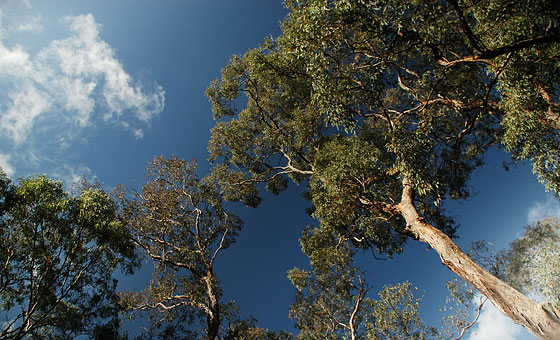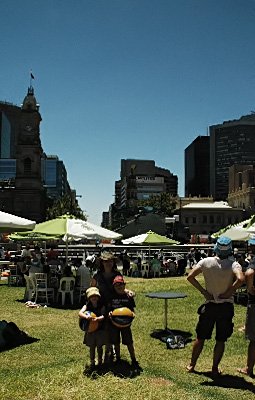Circular Polarizing Filters
So, if you've started at my introduction to circular polarizing filters, and read through the benefits of them, you're now at that point when you need to know the downsides to using them.
As with all things in life, there's some good (for example, the bluer skies, the reduction in reflections, seeing through water ...) and, on the other side of the equation, there's the bad stuff.
So what are the downsides to using circular polarizing filters?
Well, one thing to bear in mind is the focal length you're using. You see, if you're using a wide angle, you'll get part of the scene nicely polarized, and the bit at the edges missed out.
It's easier to show you an example. Have a look at the photo below and you'll see a 'stripe' of dark blue across the sky, and towards the edge of the photo the sky gets noticeably lighter.

That's because the field of view is so wide the camera captured the polarized bit in the middle of the scene, AND captured the 'un-polarized' bit at the edges too.
But there is a way to avoid this banding effect
And all you need to do is zoom in a bit.
If you zoom in you will lose the edges (the bits that missed out on polarization) and you'll capture the bit in the middle, the polarized bit, quite nicely.
And another option - re-frame your photo so that the sky portion is all polarized. Maybe place a tree in front of the un-polarized bit?
Remember that polarizing filters tend to affect the sky more than the surroundings, so you won't notice a tree being a bit less contrasty than the rest of the foliage, but you will notice the sky.
So there's one downside to circular polarizing filters - you can't reliably take wide angle photos using them, and you might have to re-frame your shot to avoid the worst if you do go for a wide angle.
And then there's the darkening effect problem
 Which means that, because you're placing a filter over your lens, you're losing some light.
Which means that, because you're placing a filter over your lens, you're losing some light.
And if you lose some of the light coming in, you'll end up with a darker-than-you-imagined photo.
Fortunately, this one is a bit easier to solve than the banding affect.
The chances are you'll be using a circular polarizing filter in good daylight. After all, their prime uses are to reduce reflection (which you won't get much of when it's dark) and improving skies (which, again, you're probably not doing when it's dark).
All you need to do is increase the exposure a bit and you should be able to compensate for the reduction in light coming in through the lens.
If you can't, for example, you might need a fast shutter speed to capture something fast moving, you have a potential second saviour - Photoshop!
Well, it doesn't have to be Photoshop, any image editing software will do. Basically, all you need to do is load up your dull image and increase the brightness a little.
This won't give you a perfect result, because it can lead to blotching coming into the photo, but it will improve a lot of photos.
